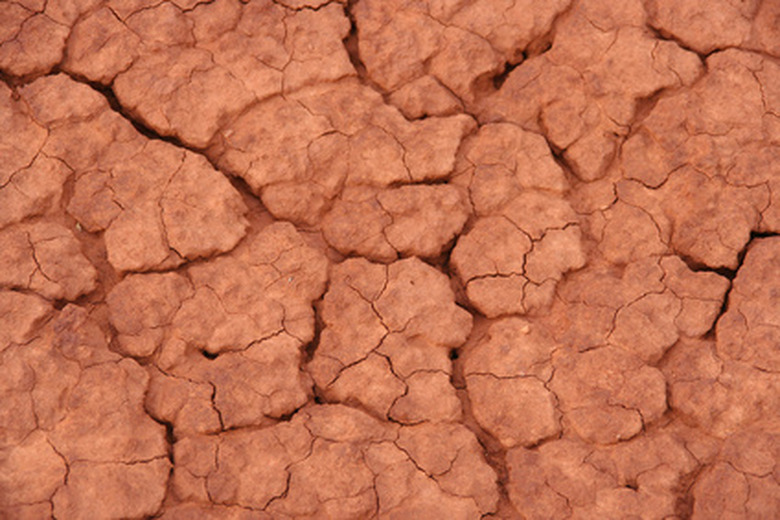Types Of Soil In Georgia
Georgia soil types include but aren't limited to clay, sand, loam and silt. Each type offers gardeners challenges as well as disadvantages in the growing field. Determine the makeup of your soil with this simple method. Fill a clear jar with a couple of handfuls of the soil, top this off with water and shake well. Set the jar on a level surface for several hours. As the soil settles, layers form. Sand falls to the bottom, silt lies on sand and clay is the top layer.
Georgia soil types include but aren't limited to clay, sand, loam and silt. Each type offers gardeners challenges as well as disadvantages in the growing field. Determine the makeup of your soil with this simple method. Fill a clear jar with a couple of handfuls of the soil, top this off with water and shake well. Set the jar on a level surface for several hours. As the soil settles, layers form. Sand falls to the bottom, silt lies on sand and clay is the top layer.
- Georgia soil types include but aren't limited to clay, sand, loam and silt.
- Determine the makeup of your soil with this simple method.
Sand
Sandy soil has sharp drainage, allowing water to pour through its mass quickly. This prevents root rot in many water-shy species such as cacti and desert succulents. There are downsides to such quick drainage. Nutrients quickly leave the soil during rainstorms because sand holds little, if any, organic matter for plants to sustain themselves. It also dries out too quickly for certain species and offers no real protection from the scorching sun. In an attempt to amend it, gardeners mulch around plants and add composts, wood chips, lawn clippings and other organic compounds to bulk up sandy soils. Plants that do well in sand include but aren't limited to asters, prickly pear, dianthus, wiregrass, daylilies, blueberries, pine trees and scrub oaks.
- Sandy soil has sharp drainage, allowing water to pour through its mass quickly.
- Nutrients quickly leave the soil during rainstorms because sand holds little, if any, organic matter for plants to sustain themselves.
Clay
Georgia clay is heavy, nutrient-rich and retains moisture during wet periods. During dry weather, it turns hard as a rock, making it difficult to work with. This heavy nature makes it hard for many plants to send down roots, while some simply rot due to lack of drainage. Gardeners combat this problem by adding organic matter and tilling it in deeply. Plants suitable for high clay content soils include daylilies, Chinese elm, cypress trees, willow trees and poplar trees.
Loam
Loam, lovingly called "black gold" by gardeners, seems to win in popularity contests worldwide. The texture of loam soil is airy, allowing water easy penetration, while the organic content retains just the right amount of moisture for plants to use. When walked on, loam soil does not compact as solidly as tilled clay. All of this makes it an ideal choice for most garden beds. However, too much foot traffic can lead to compaction. Avoid this problem by turning the soil with a tiller or shovel whenever needed. Good loam is also high in the nutrients that plants need to thrive. A few species that thrive in loam soil include roses, gardenias, wisteria, live oaks, azaleas and violets.
- Georgia clay is heavy, nutrient-rich and retains moisture during wet periods.
- This heavy nature makes it hard for many plants to send down roots, while some simply rot due to lack of drainage.
Determining Other Georgia Soil Types
Sand, clay and loam make up the three main soil types of Georgia. There are, however, combinations of these three with various additives, such as salt, rock and various sediments. The best way to determine your exact soil type is to bring a sample to your local extension service. They have the knowledge and supplies needed to determine exactly what the soil makeup is.
